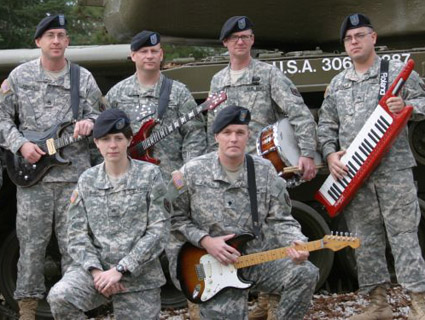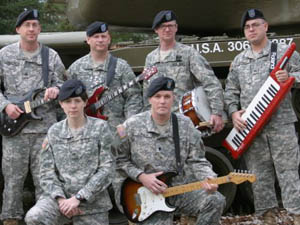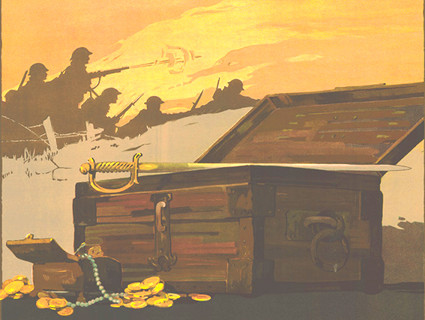
<a href="http://www.jackson.army.mil/sites/band/pages/234">282nd Army Rock Band</a>
One item that briefly landed on the budget chopping block this spring was the Pentagon’s funding for military bands, which, it turns out, adds up to around $320 million a year. Here’s a brief history of this proud, if costly, military tradition.
|
1776 |
George Washington, described as “an accomplished flutist” in an official Army history (PDF), orders more training for his fife and drum corps. |
|
1865 |
Union General Philip H. Sheridan orders his musicians to “play the gayest tunes in their books…never mind if a bullet goes through a trombone, or even a trombonist, now and then.” |
|
1918 |
Not to be outdone by our European allies’ grand bands, General John Pershing beefs up America’s bands. He later forms the US Army Band, still known as “Pershing’s Own.” |
|
1945 |
Members of the 28th Infantry and 101st Airborne Division bands fight in the Battle of the Bulge. A truckload of sheet music is destroyed, despite the efforts of a bazooka-wielding clarinetist. |
|
1969 |
The 1st Infantry Division band performs “The Colonel Bogey March” just one mile from a North Vietnamese Army regiment. According to an official account, “The enemy, confused by the action, withdrew from the area.” |
|
1990 |
The 3rd Armored Division band deploys to Kuwait, where it “performed on the enemy side of a berm while the division advanced into Iraqi territory.” |
|
2010 |
“Popular music elements,” such as rock bands like the one in the video below, are deployed in overseas combat zones. “If it can’t fit into two Blackhawks, it’s not going to happen,” an officer tells the New York Times. |
|
2011 |
Congressional cost-cutters try to slash the band budget by $120 million. House Republicans like Texas Rep. John Carter step in and preserve “an integral part of the patriotism that keeps our soldiers’ hearts beating fast.” |














